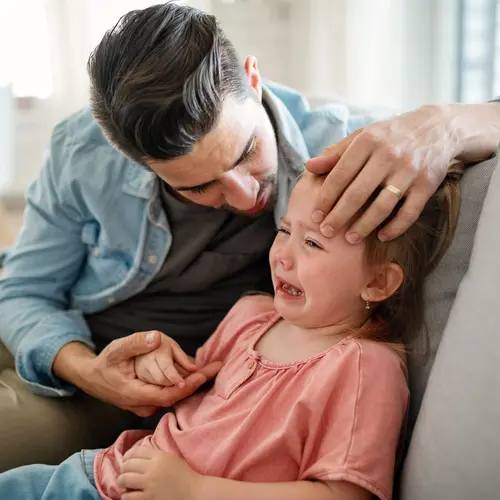May 15, 2000 -- What should a grade-school girl do if Uncle Joe shows up at school to drive her home and he's reeking of alcohol? What should a sixth-grader do when his schoolmates open up a six-pack and offer him a beer?
For parents who think young children are protected from such decisions, it may be time to think again. Although an alarming increase in college binge drinking has been in the spotlight recently, the evidence from government and private research shows that problems with alcohol begin much earlier than college.
A 1999 national survey from the University of Michigan shows that 51% of high school seniors, 40% of 10th graders, and 24% of 8th graders had used alcohol in the past month. One-third of high school seniors admitted to bingeing in the past month, as did more than a quarter of 10th graders and 15% of 8th graders surveyed. Binge drinking is defined as having four or more drinks at one sitting for females and five or more for males.
Spotting the Problem
Counselor Lori Huggins has seen the problem firsthand. She directs YouthLink at the nonprofit Oregon Partnership, where programs include a teen-to-teen hotline, an up-to-date list of resources, tips for parents, and a newly launched junior high program.
Huggins' grassroots view of alcohol use comes from many hours spent in high school classes and in teen-parent meetings. Several times a week she poses this question to a class full of high school students: "Nationally, students supposedly have their first drink between 12 and 14. Do you think that's accurate?" Every time at least three-quarters of the hands go up to agree, she says.
From high school students, Huggins has learned how often drinking habits turn dangerous. According to the Oregon Partnership, up to 20% of all 14- to 17-year-olds have a serious alcohol problem.
Although high school students' reasons for drinking are mainly social, stress-related, or "just to have fun," Huggins says peer pressure plays a bigger role in drinking for 12- to 14-year olds -- the age when drinking is most likely to start. So the Oregon program is training high school students to talk with younger students. "Teens are more apt to listen to other teens, particularly those just a little older," she says.
Reaching Younger Kids
Alcohol is the number-one drug problem in America, and it starts early -- long before high school," says Kappie Bliss, who directs an elementary school pilot program for MADD (Mothers Against Drunk Driving). "Since the risk for alcohol and other drug use shoots up when children enter the sixth grade, MADD saw the need for a prevention program for children in grades one through five. We want children to know how to protect themselves, and that includes making sure their own brains have a chance to develop into the best brain possible -- undamaged physically by alcohol and able to think critically."
"A Very Scary Ride," a story about two young boys picked up after school by an inebriated uncle, sets up one lesson that Bliss took into a Montana 2nd-grade classroom. "He smelled funny and was yelling, not nice like usual," the story recounts.
"When we taught this lesson," says Bliss, "the students were so inventive about what they could do, from going back into the school for a 'forgotten' book in order to tell a trusted adult, to saying they felt sick and couldn't get in the car," says Bliss. The segment is part of an eight-lesson series for each grade taught by trained volunteers, teachers, and very carefully selected high school students. The program is scheduled to be launched in fall 2000.
Charting the Damage
When Huggins visits high school classes, she takes an attention-getting computer program that graphs blood alcohol rate depending on gender, weight, and food intake. It offers students a quick look at the physiological effects of having two drinks an hour, for example. (In this context, a drink is defined as 12 ounces of beer, 4 ounces of wine, or 1 ounce of hard liquor.) Another tool that shows the effects of alcohol is a pair of special glasses that simulate alcohol-impairment. A boy and a girl try to walk a straight line with and without the goggles. "Usually they stop, because they realize they can't do it," says Huggins. "We always point out that if they'd been drinking, they'd probably have lost that judgment too," says Huggins. "Maybe they'd be driving."
Each time Huggins talks to a group of high schoolers, she says, almost invariably, at least one student will come up to her afterwards to say he is worried about a friend or a family member who drinks too much. Huggins says that recognizing the problem and finding help are two critical steps toward improvement. Fortunately, she says, there are counselors, parent-teen sessions, a hot line, and a teen-to-teen line available locally, as is true in many other states, and advice abounds on the Internet.
If teens are drinking, says Huggins, it's usually binge drinking. "We find that at a party a girl will typically have seven or eight drinks per hour, and boys even more.
"In one of our recent teen-parent sessions, a 15-year-old girl told us how much she drank, and her dad, sitting beside her, was in shock. He knew she was drinking, because that's why they were there, but he hadn't realized how much, or how close she had come to risking death from having such a high level of alcohol in her blood. 'Why are you doing that to yourself?' was written all over his face."
"Teens do not realize how much they're drinking, how much it affects their systems," says Huggins. All the more reason to get the word out as soon as possible. "We've got to reach the younger students."
Jeanie Puleston Fleming has written for The New York Times, Sunset, and WebMD.

